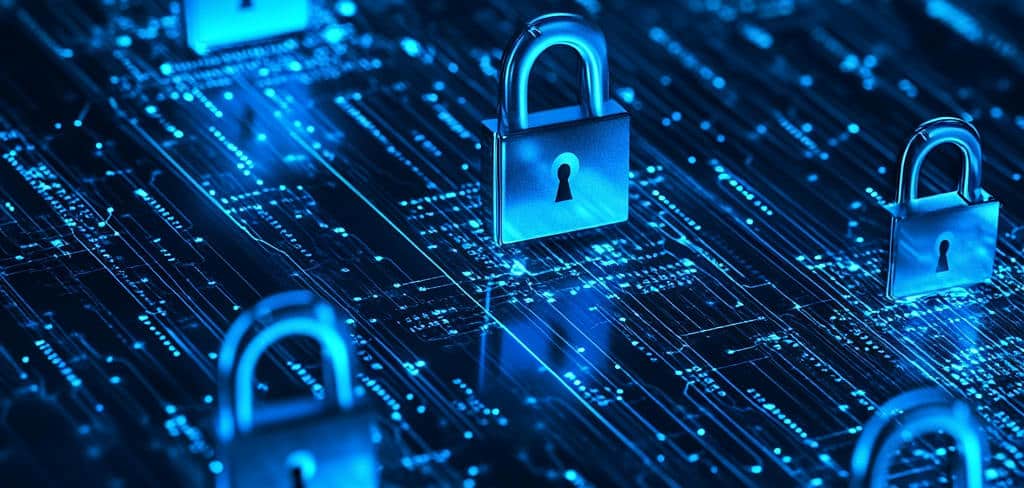Organizations face an ever-increasing array of sophisticated threats in today’s rapidly evolving cybersecurity landscape.
Security Information and Event Management (SIEM) systems have become crucial tools in the fight against these threats. They provide real-time analysis of security alerts generated by various network hardware and software;’.
However, the effectiveness of a SIEM solution heavily depends on the quality and availability of the data it analyzes. This is where SIEM data retention best practices come into play.
Understanding SIEM and the Importance of Data Retention
Before diving into SIEM data retention best practices, it’s crucial to understand what SIEM is and why data retention is so important in this context.
What is SIEM?
SIEM (Security Information and Event Management) is a comprehensive approach to security management that combines Security Information Management (SIM) and Security Event Management (SEM) functions into one security management system.
SIEM systems collect, analyze, and correlate log data and security events from various sources across an organization’s IT infrastructure in real time.
Key functions of SIEM include:
- Log Management
- Event Correlation
- Incident Detection and Alerting
- Compliance Reporting
- Threat Intelligence Integration
- Security Incident Response
The Importance of Data Retention in SIEM
Data retention is a critical aspect of SIEM operations for several reasons:
- Historical Analysis: Retained data allows for historical analysis, which is crucial for detecting long-term patterns and advanced persistent threats (APTs).
- Compliance Requirements: Many regulatory standards require organizations to retain security logs for specific periods.
- Forensic Investigations: In the event of a security incident, historical data is essential for conducting thorough forensic investigations.
- Threat Hunting: Retained data enables proactive threat-hunting activities, allowing security teams to search for indicators of compromise that may have been missed initially.
- Machine Learning and AI: Longer data retention periods provide more data for machine learning algorithms to improve threat detection capabilities over time.
Given the importance of data retention, implementing SIEM data retention is crucial for maximizing the effectiveness of your SIEM solution.
SIEM Data Retention Best Practices: A Comprehensive Guide
Now, let’s delve into the key data retention best practices that can help you maximize your threat detection capabilities:
1. Determine Optimal Retention Periods
One of the fundamental SIEM data retention best practices is determining the optimal retention periods for different types of data. Consider the following factors:
- Regulatory Requirements: Different industries have varying compliance standards that dictate minimum retention periods.
- Operational Needs: Consider how far back you typically need to investigate incidents.
- Storage Capacity: Balance retention periods with available storage resources.
- Data Type: Not all data is equally valuable. Prioritize retention of critical security events and logs.
Recommended retention periods:
- High-priority security events: 12-24 months
- Network flow data: 6-12 months
- General system logs: 3-6 months
- Application logs: 3-6 months (or longer for critical applications)
2. Implement Data Classification and Prioritization
Effective data classification and prioritization are crucial SIEM data retention best practices. Not all data is equally valuable for security analysis. Implement a system to classify and prioritize data based on its security relevance:
- Critical Security Events: Highest priority, longest retention
- Network Traffic Data: High priority, longer retention
- Authentication Logs: High priority, longer retention
- System Performance Logs: Lower priority, shorter retention
By prioritizing data, you can allocate storage resources more efficiently and ensure that the most critical data is retained for longer periods.
3. Optimize Data Collection and Normalization
To support effective data retention best practices, focus on optimizing your data collection and normalization processes:
- Collect Only Relevant Data: Be selective about the data you collect. Focus on sources that provide valuable security insights.
- Normalize Data: Ensure consistent formatting across different data sources to facilitate easier analysis and correlation.
- Use Efficient Data Formats: Consider using compressed or optimized data formats to reduce storage requirements.
- Implement Data Filtering: Filter out unnecessary or redundant data at the collection point to reduce storage and processing overhead.
4. Leverage Data Archiving and Tiering
Implementing a tiered storage approach is one of the key SIEM data retention best practices:
- Hot Tier: Recent data (e.g., last 30 days) stored on high-performance storage for quick access and analysis.
- Warm Tier: Older data (e.g., 1-6 months) moved to less expensive, slightly slower storage.
- Cold Tier: Historical data (e.g., 6+ months) archived on low-cost storage for long-term retention and compliance.
This approach allows you to balance performance and cost-effectiveness in your data retention strategy.
5. Implement Robust Data Compression and Deduplication
To optimize storage utilization, consider these SIEM data retention best practices:
- Data Compression: Use efficient compression algorithms to reduce the storage footprint of retained data.
- Deduplication: Implement deduplication techniques to eliminate redundant data and save storage space.
- Event Reduction: Use event reduction techniques to consolidate similar events and reduce storage requirements without losing critical information.
6. Ensure Data Integrity and Authenticity
Maintaining the integrity and authenticity of retained data is crucial:
- Data Encryption: Encrypt data both in transit and at rest to protect its confidentiality and integrity.
- Digital Signatures: Implement digital signatures to ensure the authenticity of retained data.
- Tamper-Evident Logging: Use tamper-evident logging mechanisms to detect any unauthorized modifications to retained data.
- Regular Integrity Checks: Perform regular integrity checks on archived data to ensure it hasn’t been corrupted or tampered with.
7. Implement Effective Data Lifecycle Management
Proper data lifecycle management is one of the essential SIEM data retention best practices:
- Data Creation: Ensure accurate and complete data collection from all relevant sources.
- Data Storage: Implement appropriate storage solutions based on data classification and retention requirements.
- Data Usage: Ensure efficient data retrieval and analysis capabilities.
- Data Archiving: Move older data to appropriate archival storage based on defined policies.
- Data Deletion: Securely deletes data that has exceeded its retention period, ensuring compliance with data protection regulations.
8. Regularly Review and Update Retention Policies
SIEM data retention should include regular reviews and updates of your retention policies:
- Conduct periodic reviews (e.g., annually) of your data retention policies.
- Adjust retention periods based on changing threat landscapes and operational needs.
- Ensure alignment with evolving compliance requirements.
- Incorporate feedback from security teams on the usefulness of retained data.
9. Implement Robust Access Controls
Protect retained data through strong access controls:
- Implement role-based access control (RBAC) for accessing historical data.
- Use multi-factor authentication to access sensitive archived data.
- Maintain detailed audit logs of all access to retained data.
- Regularly review and update access permissions.
10. Leverage Cloud Storage Solutions
Consider leveraging cloud storage solutions as part of your SIEM data retention:
- Scalability: Cloud storage can easily scale to accommodate growing data retention needs.
- Cost-Effectiveness: Cloud storage often offers more cost-effective long-term storage options.
- Geographic Distribution: Cloud solutions can provide geographic redundancy for improved data resilience.
- Advanced Security Features: Many cloud providers offer advanced security features for data protection.
When using cloud storage, ensure compliance with relevant data protection regulations and implement proper encryption and access controls.
Overcoming Common Challenges in SIEM Data Retention
While implementing SIEM data retention best practices, organizations often face several challenges. Here’s how to address some common issues:
1. Data Volume Management
Challenge: The sheer volume of data generated by modern IT environments can be overwhelming.
Solution:
- Implement effective data filtering and aggregation at the collection point.
- Use data reduction techniques like event correlation and deduplication.
- Leverage machine learning for intelligent data summarization.
2. Cost Management
Challenge: Long-term data retention can be costly, especially for high-volume environments.
Solution:
- Implement tiered storage strategies to balance performance and cost.
- Leverage cloud storage for cost-effective long-term retention.
- Regularly review and optimize data retention policies to ensure you’re only keeping necessary data.
3. Performance Impact
Challenge: Retaining and analyzing large volumes of historical data can impact the performance.
Solution:
- Indexing and data partitioning techniques are used to optimize query performance.
- Implement a tiered storage approach to keep recent data on high-performance storage.
- Leverage distributed computing technologies for processing large datasets.
4. Compliance with Data Protection Regulations
Challenge: Ensuring compliance with various data protection regulations while retaining necessary data for security purposes.
Solution:
- Implement strong data encryption and access controls.
- Develop clear data retention and deletion policies aligned with regulatory requirements.
- Regularly audit your data retention practices for compliance.
5. Data Quality and Consistency
Challenge: Ensuring the quality and consistency of retained data from diverse sources.
Solution:
- Implement robust data normalization processes.
- Use data validation techniques to ensure data integrity.
- Regularly audit and clean retained data to maintain its quality.
Conclusion
Implementing SIEM is crucial for maximizing the effectiveness of your threat detection capabilities.
By carefully considering retention periods, optimizing data collection and storage, and leveraging advanced technologies, organizations can ensure they have the historical data needed for comprehensive security analysis while managing costs and compliance requirements.
Remember, data retention is not a one-size-fits-all solution. The best practices outlined in this guide should be adapted to your organization’s specific needs, regulatory environment, and risk profile.
Regularly review and update your data retention strategies to ensure they continue to meet your evolving security requirements.
By following these SIEM data retention best practices, you can enhance your organization’s ability to detect, investigate, and respond to security threats, ultimately strengthening your overall cybersecurity posture in an increasingly complex threat landscape.


